Background
At the age of 21, Penelope Farmer was contracted for her first collection of short stories, The China People. One story originally intended for it proved too long to include. This was rewritten as the first chapter of The Summer Birds (1962), her first book featuring Charlotte and Emma Makepeace. [3] A second book, Emma in Winter , with Emma as the main character, followed in 1966. Charlotte Sometimes was first published in 1969 by Harcourt in the United States, and by Chatto & Windus in the UK in the same year. [4]
Penelope Farmer arranged many incidents in Charlotte Sometimes ahead of time based on family experiences. [5] She later wrote that Charlotte and Emma were originally based on her mother and her mother's sister as children, having no parents and "having to be everything to each other", one being the responsible one, the other being rather difficult. She wrote, "Emma and Charlotte have grown in their own ways and aren't exactly based on my mother and her sister now, but this is where it started." [6] Penelope Farmer's mother, Penelope Boothby, who was "talkative and unconventional", besides being the inspiration for Emma, also inspired the character of Emily. [7] The boarding school in the novel is set near where Penelope Farmer lived in London, but based on the West Heath Girls' School in Sevenoaks, Kent, which she and her twin sister Judith attended in the 1950s. [6] Elements in the book based on the school include the pillared front door, the glass verandah and the cedar tree, which still stands, as of 2020. [8] Some characters were based on real students of the time. The episode when Charlotte walks onto the glass verandah is based on a real event, when Penelope Farmer climbed on the glass verandah and broke it. [9]
Plot
Part one
Charlotte arrives at a new boarding school, and is shown around by a prefect named Sarah. Sarah's mother also attended the school. She is to share a room with other girls, Susannah, Elizabeth, Janet, and Vanessa. The next morning she finds herself in the same place, but in the year 1918 – with war still going on. A younger girl called Emily calls Charlotte her sister and addresses her as "Clare". She tries to spend the day in 1918 without being noticed. Each night, Charlotte finds herself swapping between her own time and Clare's time. They must learn to live two different lives. Charlotte and Clare manage to write to each other in Clare's diary, which they share and hide in their bed.
Emily and Clare are supposed to leave their room soon and go into lodgings with the Chisel Brown family. They have to make sure this happens when Clare is in 1918, because they won't be able to switch again after that.
Part two
Charlotte, expecting to have returned to her own time for the last time, is shocked to find that she has not, and is still in 1918. She will go into lodgings with the Chisel Brown family: it appears she will be trapped in the past. In the house, Miss Agnes Chisel Brown shows Charlotte and Emily the toys she once played with, including toy soldiers and a solitaire board with marbles. She tells the two girls about her brother Arthur, who died in the war. Charlotte reflects, forward and back: to Arthur in the past; her own sister Emma in the future; and Clare, trapped in Charlotte's time. She struggles with her identity, being Charlotte sometimes but Clare at other times.
Charlotte and Emily form a plan to enter the school by night in an attempt to get Charlotte into the bed which will take Charlotte back to her own time. Inside her room, which is now being used as the school sickroom, Charlotte finds the bed is occupied, and thus she cannot return home. She escapes being seen by Nurse Gregory but is seen by another student, Ruth.
Charlotte is not the only one who struggles with identity. Emily tells of the wretchedness of being motherless and unwanted, moving between homes while her father fights in the war. Meanwhile, Charlotte dreams she is fighting to stay as Charlotte. She dreams about Arthur.
A letter arrives for Clare and Emily from their father. Emily does not let Charlotte read it, to the bewilderment of the other girls. Charlotte, thoughtful as always, wonders who Sarah's mother is: perhaps it will be Charlotte herself if she is trapped in 1918?
At night, Charlotte dreams about Arthur again, as a drummer boy, and that she has turned into Agnes. Her crisis of identity comes to a head as she struggles to preserve her identity as Charlotte.
One evening, the Chisel Browns hold a seance in an attempt to speak to Arthur. The girls hide behind the curtains to observe. During the seance, they hear Clare's voice crying out for Emily. Emily cries out, and the two girls are discovered and disciplined. Later, Miss Agnes asks about the voice they heard at the seance – Clare's. She then tells Charlotte and Emily of Arthur's war experiences.
Finally, the Armistice comes. The war is over: people dance and celebrate in the street, and Charlotte and Emily join in, even though it would anger Mr Chisel Brown. In disgrace, Charlotte and Emily are sent back to the school. Miss Agnes gives them the toys as a gift.
Part three
Ruth recalls her "dream" of seeing Clare whilst in the sickroom. Because of the flu epidemic the students are able to play wild games in the dormitories, and eventually Charlotte is able to sleep in the bed that will return her to her own time.
On arriving back, Charlotte is startled to learn that her roommate Elizabeth had deduced the truth about her swap with Clare. Charlotte wonders about Sarah's mother and what has become of Emily and Clare. At the school, Charlotte sees the elderly Miss Wilkin. Charlotte realises that she had known Miss Wilkin when she was a young teacher in 1918.
One day, Charlotte learns what has become of Emily and Clare through a conversation with Sarah. Sarah's mother is Emily, and Clare died in the flu epidemic after the war. Later, Charlotte and Elizabeth discuss the events Charlotte has experienced. They find the exercise book in one of the legs of the bed, where it has been for forty years. It includes the last letter Charlotte wrote to Clare.
Charlotte receives a package from Emily as an adult. It contains a letter from Emily, and the toys which Miss Agnes had given them over forty years ago. Charlotte places the marbles from the solitaire set in a jar and fills it with water, which the other girls admire. Charlotte feels a sense of personal identity in now having her own decoration to her dresser, yet muses that the marbles belonged to her when she was living the life of another person, namely Clare. The end of term comes, and the boarders leave the school in the school bus, singing rhymes. [10]
Continuity
The first novel featuring Charlotte and Emma Makepeace was The Summer Birds, published in 1962, set in the South Downs in southern England. Charlotte Sometimes begins one year after the events in The Summer Birds after Charlotte has left her small village school, and covers the period of her first term at boarding school. Although Charlotte's year is not explicitly stated in Charlotte Sometimes, several passages suggest that Charlotte's year is 1963, the year after The Summer Birds was written. [note 1]
While written three years after Emma in Winter (1966) — which was set during Charlotte's second term at boarding school — the events of Charlotte Sometimes occur beforehand, during Charlotte's first term.
Charlotte's sister Emma and their grandfather Elijah do not appear in Charlotte Sometimes, although there are references to them. For example, Charlotte compares Emily with her sister Emma in her own time, and compares the Chisel Brown family home with her own home, Aviary Hall.
Emma in Winter begins during the same Christmas holidays at which Charlotte Sometimes ends, and indicates that Charlotte will stay a week with one of the friends she made at boarding school. [11] Emma in Winter then follows Emma's story while Charlotte returns to boarding school.
Reviews
Charlotte Sometimes received widespread critical acclaim.
Margery Fisher, in a 1969 review for her children's literature journal Growing Point, wrote, "Like Emma in Winter, this is really a study in disintegration, the study of a girl finding an identity by losing it.... Above all, here is a dream-allegory which teaches not through statement but through feeling. We sense the meaning of Charlotte's changes of identity in the way that she senses them herself.... [It is] a book of quite exceptional distinction... a haunting, convincing story which comes close to being a masterpiece of its kind...." [16]
Children's novelist Eleanor Cameron wrote, "Farmer writes with style. She is vivid in her depiction of place: on almost every page, scattered with colourful figures of speech, we are drawn into the school and the surroundings of the school through sights and sounds and smells and textures... above all we are moved by the depth and poignancy of the relationship between Charlotte and Emily." She continues, "Farmer is always gifted in her grasp of possibilities that bring us up short with surprise and delight and satisfaction." [17]
Neil Millar in The Christian Science Monitor wrote, "Charlotte Sometimes is a book of quite exceptional distinction.... The book is essentially about humanity caught up in the still trickery of time.... Not easily forgotten." [18]
In 1969, The Sunday Times described the book as "this year's most haunting fantasy". [17]
Children's publisher Margaret K. McElderry wrote, "[Charlotte Sometimes] is a fascinating exploration of the fragile barriers between layers of time, handled with great skill in the writing and delicacy of perception. [19]
The British children's author David Rees wrote in 1980 of how "the book is none the worse for breaking the conventional bounds of the children's novel. It is probably Penelope Farmer's finest novel – complex, taut, not a word wrong – and it thoroughly deserves the popularity it has attained." [14]
Peggy Heeks writes in Twentieth-Century Children's Writers that Charlotte Sometimes "shows a brilliant handling of the time-switch technique and a sincerity which rejects slick solutions to the dilemmas of the two heroines." [20]
Writer Hannah Gersen, in a review for The Millions , wrote, "The book is good, really good.... I can see why this novel inspired The Cure. It's a somewhat gloomy book, an eerie story about childhood, identity, loneliness, and death. At the same time, it has all the pleasures of a good time-travel yarn." [21] Gersen continues, "Adolescence is all about forging an identity, and this novel speaks to those questions of “who am I?” and “how do other people see me?” in an abstract, haunting way." [21]
Influence, adaptations and similar novels
Audio and television adaptations
The BBC One children's television programme Jackanory featured Charlotte Sometimes as a five-part abridged, serialised reading in January 1974, read by Rosalie Crutchley. [23] Daphne Jones adapted the text as a serial, and the programme featured photographs by Jimmy Matthews Joyce. The executive producer was Anna Home. [24]
BBC Radio 4 aired an abridged reading of the novel, read by Deborah Findlay, in July–August 1994. The seven-part abridged version was created by Hilary Brand, with the Sally Avens as the producer. [25]
In 1993, Chivers Children's Audio Books released an adaptation of Charlotte Sometimes on audio cassette. [26]
Influence
In 1980, British writer David Rees published The Marble in the Water, a collection of essays on British and US children's literature. [27] Its title comes from the eighth chapter of part 2 of Charlotte Sometimes. [28] When Charlotte observes the marbles placed by Emily in a jar of water, she notes how big they look in the water, yet ordinary when taken out: "But when she put her fingers into the water and pulled a marble out, it was small by comparison with those still in the glass, and unimportant too" (p. 157).
In 1981, a single entitled "Charlotte Sometimes" was released by English band The Cure. Its lyrics concern Charlotte, the novel's central character. They refer to the opening paragraphs: "By bedtime all the faces, the voices had blurred for Charlotte to one face, one voice.... The light seemed too bright for them, glaring on white walls.", [29] and to several events near the end of the book: people dancing in the streets at Armistice; and a school walk when Charlotte cries upon hearing of Clare's fate. The title of the single's B-side, "Splintered in Her Head", was also taken from a line in the novel. [30] The Cure later released another song based on the novel, "The Empty World", on their 1984 album The Top . In 2002 the film-maker Eric Byler released a film entitled Charlotte Sometimes . [31] Its storyline is unrelated to Penelope Farmer's novel, although its title comes from the song by The Cure, based on the novel.
In 2007, Penelope Farmer herself wrote another novel, Lifting the World, in which a high school student writes a story in class with a similar premise to Charlotte Sometimes. In his story, the student went to sleep and woke up in the same house, but one hundred years earlier. The inhabitants of the house looked at him strangely, asking him what he was doing there, and where he came from, and drove him out of the house. [32]
"Charlotte Sometimes" was formerly used as a stage name by the American singer-songwriter Jessica Charlotte Poland. [33] [34]
Similar novels of the period
Other similar novels of the period include Jessamy (1967) by Barbara Sleigh. In Jessamy, written in a matter-of-fact style, a young girl experiences a time-slip, with the narrative switching between World War I and the present day. In both novels, people, places and items which were seen in the past show up again in the present day narrative.

Anne Brontë was an English novelist and poet, and the youngest member of the Brontë literary family.
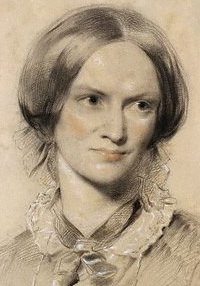
Charlotte Brontë was an English novelist and poet, the eldest of the three Brontë sisters who survived into adulthood and whose novels became classics of English literature.

Emily Jane Brontë was an English novelist and poet who is best known for her only novel, Wuthering Heights, now considered a classic of English literature. She also published a book of poetry with her sisters Charlotte and Anne titled Poems by Currer, Ellis and Acton Bell with her own poems finding regard as poetic genius. Emily was the second-youngest of the four surviving Brontë siblings, between the youngest Anne and her brother Branwell. She published under the pen name Ellis Bell.

The Brontës were a nineteenth-century literary family, born in the village of Thornton and later associated with the village of Haworth in the West Riding of Yorkshire, England. The sisters, Charlotte (1816–1855), Emily (1818–1848) and Anne (1820–1849), are well-known poets and novelists. Like many contemporary female writers, they published their poems and novels under male pseudonyms: Currer, Ellis, and Acton Bell. Their stories attracted attention for their passion and originality immediately following their publication. Charlotte's Jane Eyre was the first to know success, while Emily's Wuthering Heights, Anne's The Tenant of Wildfell Hall and other works were accepted as masterpieces of literature after their deaths.
Rosamunde Pilcher, OBE was a British novelist, best known for her sweeping novels set in Cornwall. Her books have sold over 60 million copies worldwide. Early in her career she was published under the pen name Jane Fraser. In 2001, she received the Corine Literature Prize's Weltbild Readers' Prize for Winter Solstice.

Penelope Mary Fitzgerald was a Booker Prize-winning novelist, poet, essayist and biographer from Lincoln, England. In 2008 The Times listed her among "the 50 greatest British writers since 1945". The Observer in 2012 placed her final novel, The Blue Flower, among "the ten best historical novels". A.S. Byatt called her, "Jane Austen’s nearest heir for precision and invention."

A Little Princess is a children's novel by Frances Hodgson Burnett, first published as a book in 1905. It is an expanded version of the short story "Sara Crewe: or, What Happened at Miss Minchin's", which was serialized in St. Nicholas Magazine from December 1887, and published in book form in 1888. According to Burnett, after she composed the 1902 play A Little Un-fairy Princess based on that story, her publisher asked that she expand the story as a novel with "the things and people that had been left out before". The novel was published by Charles Scribner's Sons with illustrations by Ethel Franklin Betts and the full title A Little Princess: Being the Whole Story of Sara Crewe Now Being Told for the First Time.

Emma Donoghue is an Irish-Canadian playwright, literary historian, novelist, and screenwriter. Her 2010 novel Room was a finalist for the Booker Prize and an international best-seller. Donoghue's 1995 novel Hood won the Stonewall Book Award and Slammerkin (2000) won the Ferro-Grumley Award for Lesbian Fiction. She is a 2011 recipient of the Alex Awards. Room was adapted by Donoghue into a film of the same name. For this, she was nominated for the Academy Award for Best Adapted Screenplay.

The Brontë Parsonage Museum is a writer's house museum maintained by the Brontë Society in honour of the Brontë sisters – Charlotte, Emily and Anne. The museum is in the former Brontë family home, the parsonage in Haworth, West Yorkshire, England, where the sisters spent most of their lives and wrote their famous novels.
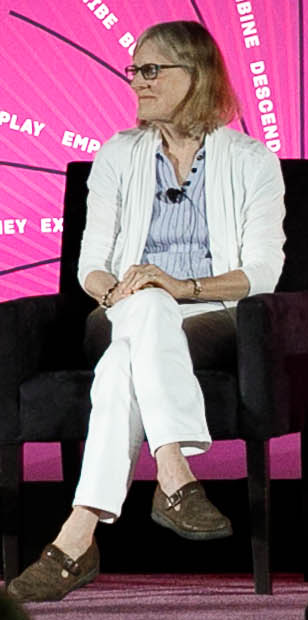
Ann Matthews Martin is an American children's fiction writer, known best for The Baby-Sitters Club series.

Roedean School is an independent boarding and day school founded in 1885 in Roedean Village on the outskirts of Brighton, East Sussex, England, and governed by Royal Charter. It is for girls aged 11 to 18. The campus is situated near the Sussex Downs, on a cliff overlooking Brighton Marina and the English Channel. It is widely regarded as the "Eton College" of all-girls boarding schools in the United Kingdom.

Angela Brazil was one of the first British writers of "modern schoolgirls' stories", written from the characters' point of view and intended primarily as entertainment rather than moral instruction. In the first half of the 20th century she published nearly 50 books of girls' fiction, the vast majority being boarding school stories. She also published numerous short stories in magazines.

"Charlotte Sometimes" is a song by English rock band the Cure, recorded at producer Mike Hedges' Playground Studios and released as a non-album single on 9 October 1981 by Polydor Records, following the band's third studio album Faith. The titles and lyrics to both sides were based on the book Charlotte Sometimes by Penelope Farmer.
Madeleine L'Engle, an American novelist, diarist and poet, produced over twenty novels, beginning with The Small Rain (1945), and continuing into the 1990s with A Live Coal in the Sea (1996). Many of her fictional characters appeared in more than one novel, sometimes in more than one series of novels. Other major characters are the protagonists of a single title. This article provides information about L'Engle's most notable characters.
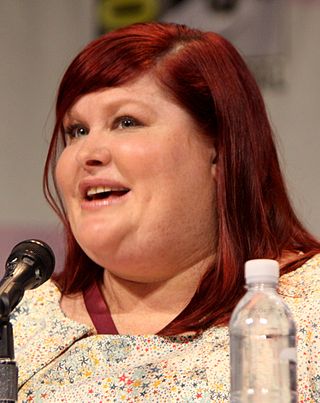
Judith Lewis, better known by her pen name Cassandra Clare, is an American author of young adult fiction, best known for her bestselling series The Mortal Instruments.
Penelope Jane Farmer is an English fiction writer well known for children's fantasy novels. Her best-known novel is Charlotte Sometimes (1969), a boarding-school story that features a multiple time slip.
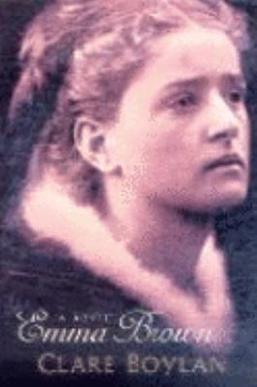
Emma is the title of a manuscript by Charlotte Brontë, left incomplete when she died in 1855.
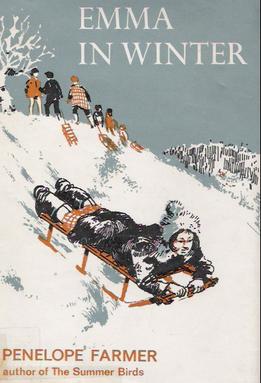
Emma in Winter is a children's novel by British writer Penelope Farmer, published in 1966 by Chatto & Windus in the UK, and by Harcourt in the USA. It is the second of three books featuring the Makepeace sisters, Charlotte and Emma, These three books are sometimes known as the Aviary Hall books.

The Summer Birds is a children's novel by British writer Penelope Farmer, published in 1962 by Chatto & Windus, and receiving a Carnegie Medal commendation.
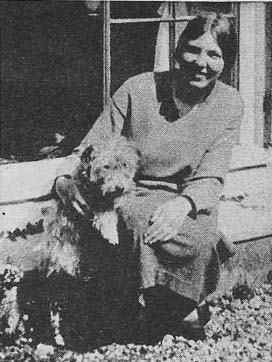
Constance Winifred Savery was a British writer of fifty novels and children's books, as well as many short stories and articles. She was selected for the initial issue of the long-running series entitled The Junior Book of Authors (1951–2008) and for the first, 1971, volume of Anne Commire's Something About the Author, which reached volume 320 in 2018. Savery's World War II novel, Enemy Brothers, received praise and remains in print. In 1980, at age eighty-two, she completed a Charlotte Brontë two-chapter fragment, which was published as "Emma by Charlotte Brontë and Another Lady". The book was translated into Dutch, Spanish, and Russian.

















